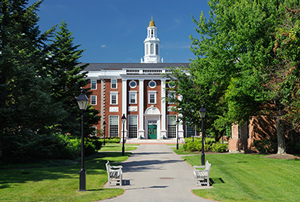
Institutions vary widely in reputation and priorities when it comes to academic expectations and rigor. Reputation and priorities can be influenced by the level of competition for specific programs within the institution, as well as the type of careers for which the institution prepares students. Students should research carefully to make sure their grades, test scores, and course work align with the range typically accepted by their target schools. Many counselors recommend applying to at least one “safe” school and one “reach” school to increase the likelihood the student will have a variety of viable choices.
For some students, it may be very important to enroll in a demanding, competitive program. They may thrive under this kind of challenge, or they may feel that, without this competitive training, they will be at a disadvantage in their future fields. Other students may see post-secondary life as a time to grow and try new things, but not necessarily to labor under an intense academic course load. Without encouraging students to “take the easy way out,” you can help them make realistic assessments of their motivation to excel based on the capacities they have demonstrated in the past. Help them consider how this motivation level should influence the level of competition and the weight of the workload they choose.

K-12 educators do not always have the information necessary to help students evaluate their capacities for college-level assignments and workloads. Involving local post-secondary educators in K-12 lectures, exam planning, grading, and jurying of capstone projects will help give students the information necessary to make realistic assessments of their academic strengths and capacities. Similarly, encouraging students to enroll in college courses while still in high school can help them self-assess their capacities for rigorous, college-level work.